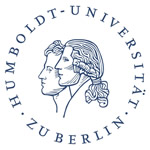Institut für Physik - Humboldt-Universität zu Berlin and Max-Born-Institut
Metal nanostars: Stochastic optimization of resonant scattering properties
A Tassadit, Demetrio Macías, José A Sánchez-Gil, Pierre-Michel Adam, and Rogelio Rodriguez-Oliveros (2011)
Superlattices and Microstructures, 49:288.
Summary (expand/hide)
In this work we make use of a bio-inspired stochastic technique to find the optimal geometry that maximizes, for a fixed wavelength, the scattering cross section of a bidimensional metal nanostar. To solve the scattering problem, we employ a rigorous numerical method based on Green’s theorem using surface integral equations. It is shown that the optimization procedure converges to a nanostar geometry that exhibits a resonance at or near the given wavelength. The influence of the illumination conditions, the effect of geometries found on the near-field features, and the possibilities and limitations of our approach are discussed through some numerical experiments.
Default Region Image



